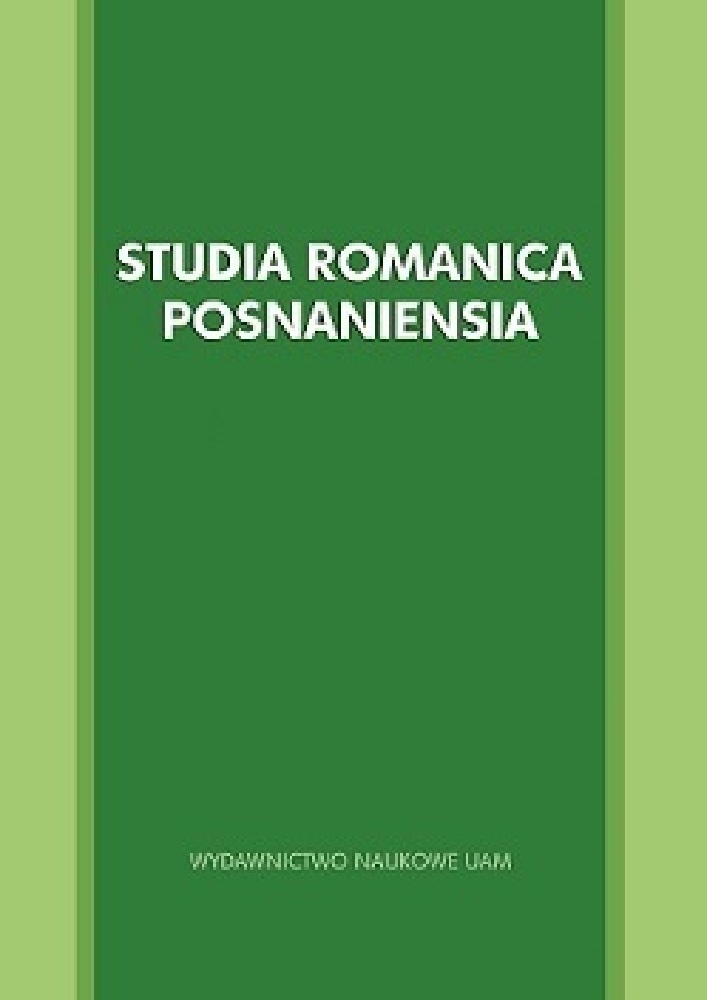Abstrakt
This paper aims at examining the causes of the emergence of French subordinate Noun-Noun compounds. It is well known that the Noun-Noun pattern in French remains marginal compared to other lexicogenic processes, especially N-PREP-N or N-A, and it is supposed that its appearance as well as its progressive development took place during the last two centuries (19th-20th). The aim of this paper is to examine more in detail when and why French Noun-Noun structures emerge. As for the first question, empirical data from the Frantext corpus allow to hypothesize that both the type and the token frequency of French Noun-Noun compounds remain stable since the thirties of the nineteenth century until the end of the Second World War and that after this period, especially during the sixties, it begins to grow exponentially. Contrary to Arnaud’s estimate (2003, p. 141), no significant change in frequency or productivity was observed around the middle of the 19th century. As for the second question, the author claims that the emergence of subordinate N-N compounds was triggered by an increase in the productivity of the attributive N-N compounds, for which there is no competitive pattern in French. The theoretical rationale of this hypothesis is anchored in paradigmatic approaches to word formation, with specific reference to the formalization made according to the Construction Morphology framework (Booij, 2010).Bibliografia
Arnaud, P. (2003). Les composés « timbre-poste ». Lyon : Presses Universitaires de Lyon.
Bisetto, A., Scalise, S. (2005). « The classification of compounds ». Lingue e Linguaggio, 4 (2), 319-332.
Booij Geert, E. (2010). Construction Morphology. Oxford : Oxford University Press.
Booij Geert, E. (2016). « Construction morphology ». In : A. Hippisley, G. Stump, The Cambridge Handbook of Morphology. Cambridge : Cambridge University Press, 424-448.
Darmesteter, A. (1874). Traité de la formation des mots composés dans la langue française comparée aux autres langues romanes et au latin. Paris : A. Franck.
Darmesteter, A. (1877). De la création actuelle de mots nouveaux dans la langue française et des lois qui la régissent. Paris : F. Vieweg.
Frantext, Corpus de langue française, https://www.frantext.fr/ (consulté en mars-avril 2018).
Hatcher, A.G. (1946). « Le Type Timbre-Poste ». Word, 2-3, 216-228.
Hathout, N., Sajous, F., Calderone, B. (2014). « GLÀFF, a Large Versatile French Lexicon ». Proceedings of the Ninth International Conference on Language Resources and Evaluation (LREC’14), Reykjavik, Iceland, 1007-1012.
Picone, M.D. (1996). Anglicisms, Neologisms and Dynamic French. Amsterdam : John Benjamins.
Radimský, J. (2015). Noun + Noun Compounds in Italian. A corpus-based study, edice Epistémé. České Budějovice : Jihočeská univerzita.
Rainer, F., Buridant, C. (2015). « From Old French to Modern French ». In : P.O. Muller (ed.), Word-formation: an international handbook of the languages of Europe, vol. 3. Berlin/Boston : Walter de Gruyter, 1975-2000.
Scalise, S., Bisetto, A. (2009). « The classification of compounds ». In : R. Lieber, P. Štekauer (eds.), The Oxford Handbook of Compounding. Oxford : Oxford University Press, 34-53.
Villoing, F. (2012). « French compounds ». Probus, 24/1, 29-60.
Licencja
- Autor oświadcza, że przysługują mu osobiste i majątkowe prawa autorskie do Utworu oraz że nie są one ograniczone w zakresie objętym niniejszą Umową, oraz że utwór jest dziełem oryginalnym i nie narusza majątkowych lub osobistych praw autorskich innych osób.
- Autor udziela Uniwersytetowi im. Adama Mickiewicza w Poznaniu niewyłącznej i nieodpłatnej licencji na korzystanie z Utworu bez ograniczeń terytorialnych i przez czas nieokreślony na następujących polach eksploatacji:
2.1. wytwarzanie określoną techniką egzemplarzy Utworu, w tym techniką drukarską, reprograficzną, zapisu magnetycznego oraz techniką cyfrową;
2.2. wprowadzanie do obrotu, użyczenie lub najem oryginału albo egzemplarzy Utworu;
2.3. publiczne wykonanie, wystawienie, wyświetlenie, odtworzenie oraz nadawanie i reemitowanie, a także publiczne udostępnianie Utworu w taki sposób, aby każdy mógł mieć do niego dostęp w miejscu i w czasie przez siebie wybranym;
2.4. włączenie Utworu w skład utworu zbiorowego;
2.5. wprowadzanie Utworu w postacie elektronicznej na platformy elektroniczne lub inne wprowadzanie Utworu w postaci elektronicznej do Internetu, Intranetu, Extranetu lub innej sieci;
2.6. rozpowszechnianie Utworu w postaci elektronicznej w Internecie, Intranecie, Extranetu lub innej sieci, w pracy zbiorowej jak również samodzielnie;
2.7. udostępnianie Utworu w wersji elektronicznej w taki sposób, by każdy mógł mieć do niego dostęp w miejscu i w czasie przez siebie wybranym, w szczególności za pośrednictwem Internetu, Intranetu, Extranetu lin innej sieci;
2.8. udostępnianie Utworu zgodnie z wzorcem licencji Attribution-NonCommercial-ShareAlike 4.0 International (CC BY-NC-SA 4.0) lub innej wersji językowej tej licencji lub którejkolwiek późniejszej wersji tej licencji, opublikowanej przez organizację Creative Commons. - Autor zezwala Uniwersytetowi im. Adama Mickiewicza w Poznaniu na:
3.1. nieodpłatne korzystanie i rozporządzanie prawami do opracowań Utworu i tymi opracowaniami.
3.2. wysyłanie metadanych Utworu oraz Utworu do komercyjnych i niekomercyjnych baz danych indeksujących czasopisma. - Autor upoważnia i zobowiązuje Uniwersytet im. Adama Mickiewicza w Poznaniu do udzielania osobom trzecim dalszych licencji (sublicencji) do Utworu oraz do innych materiałów, w tym utworów zależnych lub opracowań zawierających lub powstałych w oparciu o Utwór, przy czym postanowienia takich sublicencji będą tożsame z wzorcem licencji Attribution-NonCommercial-ShareAlike 4.0 International (CC BY-NC-SA 4.0) lub innej wersji językowej tej licencji lub którejkolwiek późniejszej wersji tej licencji, opublikowanej przez organizację Creative Commons Tym samym uprawnia wszystkich zainteresowanych do korzystania z utworu wyłącznie w celach niekomercyjnych pod następującymi warunkami:
4.1. uznanie autorstwa czyli obowiązek podania wraz z rozpowszechnionym utworem informacji, o autorstwie tytule, źródle (odnośniki do oryginalnego utworu, doi) oraz samej licencji;
4.2. na tych samych warunkach, wolno rozpowszechniać utwory zależne jedynie na licencji identycznej to tej, na jakiej udostępniono utwór oryginalny. - Uniwersytet im. Adama Mickiewicza w Poznaniu jest zobowiązany do:
5.1. udostępniania Utworu w taki sposób, aby każdy mógł mieć do niego dostęp w miejscu i w czasie przez siebie wybranym bez ograniczeń technicznych;
5.2. poprawnego informowania osób, którym Utwór będzie udostępniany o udzielonych im sublicencjach w sposób umożliwiający odbiorcom zapoznanie się z nimi.
Pozostałe postanowienia
- Uniwersytet im. Adama Mickiewicza w Poznaniu zachowuje prawo do czasopisma jako całości (układ, forma graficzna, tytuł, projekt okładki, logo itp.).
